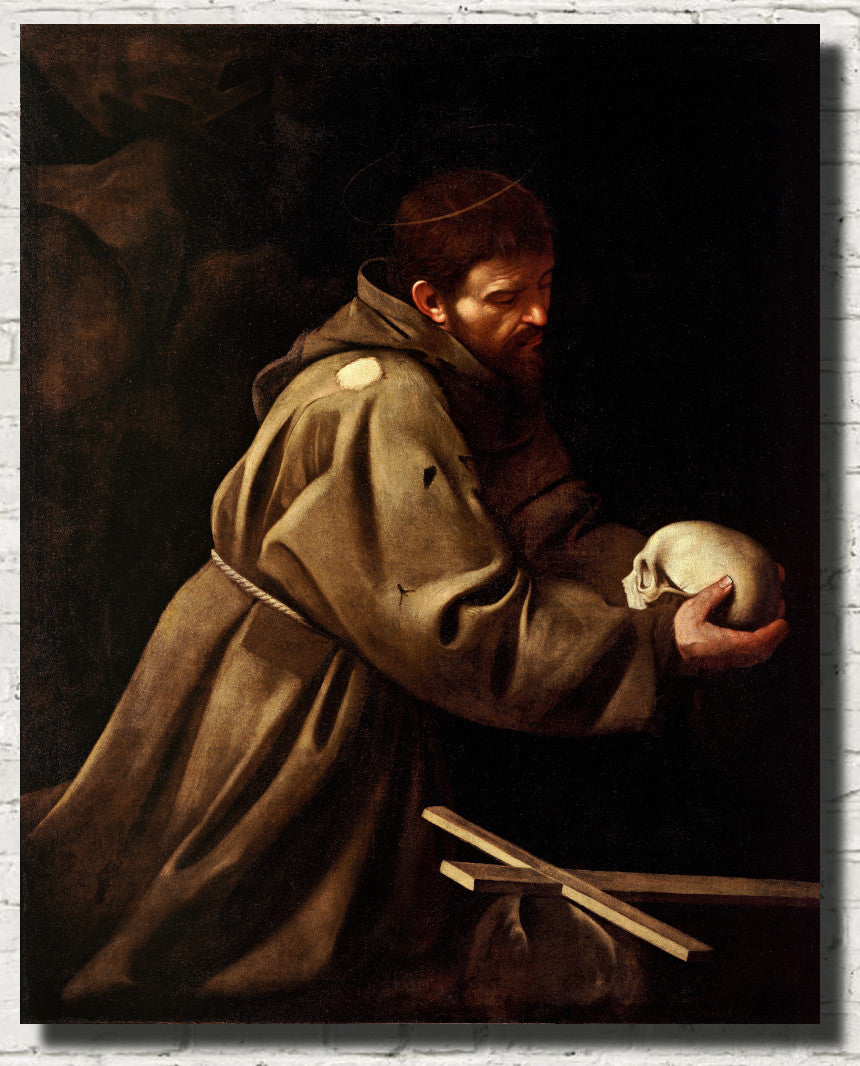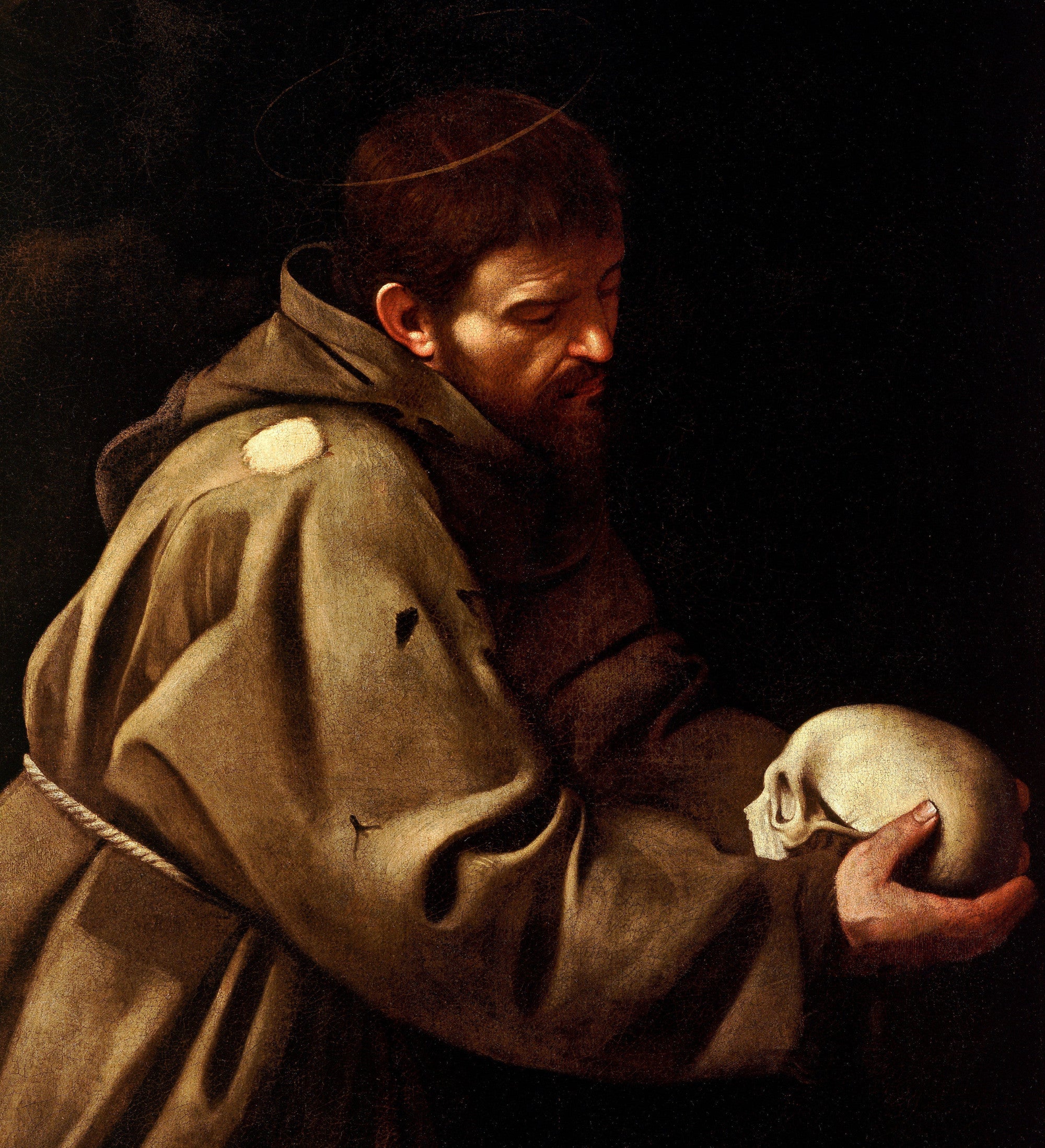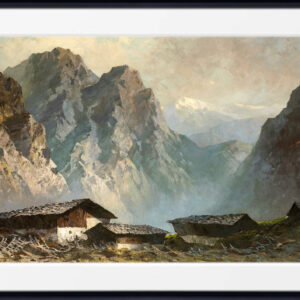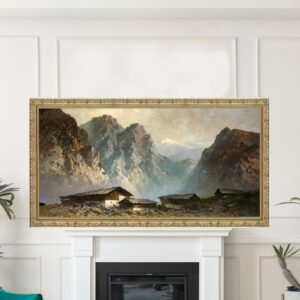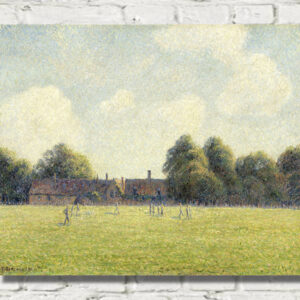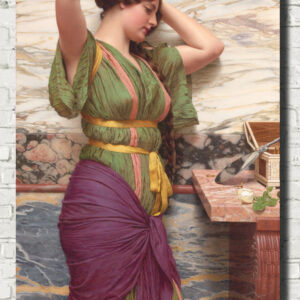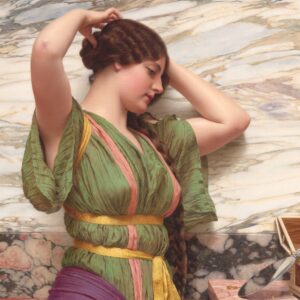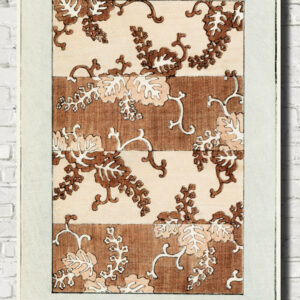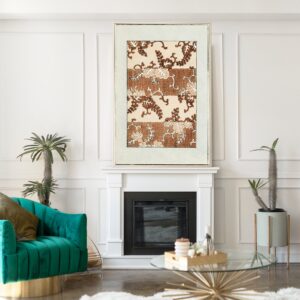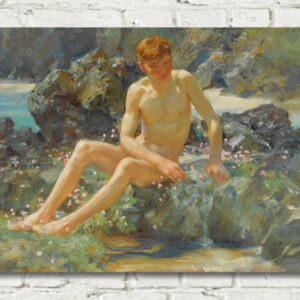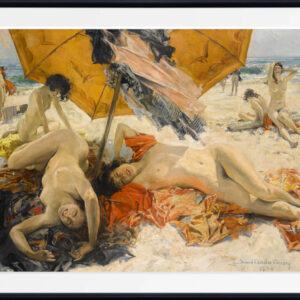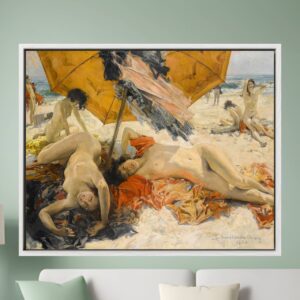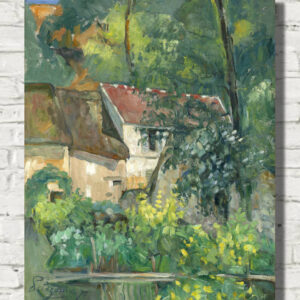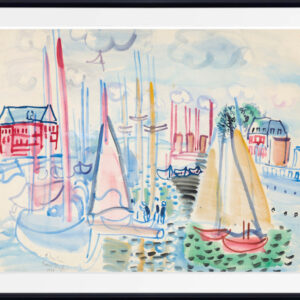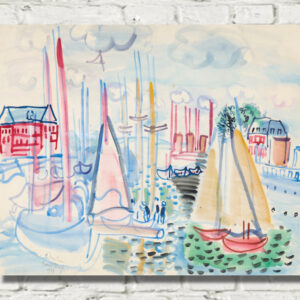Caravaggio Baroque Fine Art Print, Saint Francis in Prayer
This painting is among the most celebrated of all surviving ver-sions of
Saint Francis in Meditation. The two other versions, nearly identical to each other, and belonging to the Museum of Ca-puchins at the Church of Santa Maria della Concezione in Rome and the Church of S. Pietro in Carpineto Romano, have both been attributed to Caravaggio. However, recent techni-cal investigations have revealed that only the Carpineto version was painted by the master.
In the absence of documentary evidence, the dating of the paint-ing by Caravaggio and of the version at Lampronti gallery can only be established through stylistic comparisons. In terms of subject,there is no precedent for this type of iconography in ancient liter-ature, and thus scholars fully accord the iconographic invention to Caravaggio – during the time he had spent between Sicily and Malta, and on his final return to Naples, although it is impossible to propose a precise date. Lampronti’s
Saint Francis presents some features of the artist’s early work, suggesting that this is not a later copy after the artist. Tellingly, this Saint Francis exhibits Caravaggio’s “economical”tech-nique of painting. He typically exploited the first layer of paint not only as a priming layer but rather as the starting point on which he modelled forms by applying a few brushstrokes of lighter paint to describe solids and voids. Even the obscure yet gleaming appearance of the saint and the stark treatment of the background are typical of the last phase of Caravaggio’s career. It is with these considerations that one can affiliate the present painting to themaster
Michelangelo Merisi (Michele Angelo Merigi or Amerighi) da Caravaggio (29 September 1571 – 18 July 1610) was an Italian painter active in Rome for most of his artistic life. During the final four years of his life he moved between Naples, Malta, and Sicily until his death. His paintings combine a realistic observation of the human state, both physical and emotional, with a dramatic use of lighting, which had a formative influence on Baroque painting.
Caravaggio employed close physical observation with a dramatic use of chiaroscuro that came to be known as tenebrism. He made the technique a dominant stylistic element, darkening shadows and transfixing subjects in bright shafts of light. Caravaggio vividly expressed crucial moments and scenes, often featuring violent struggles, torture, and death. He worked rapidly, with live models, preferring to forgo drawings and work directly onto the canvas. His influence on the new Baroque style that emerged from Mannerism was profound. It can be seen directly or indirectly in the work of Peter Paul Rubens, Jusepe de Ribera, Gian Lorenzo Bernini, and Rembrandt, and artists in the following generation heavily under his influence were called the “Caravaggisti” or “Caravagesques”, as well as tenebrists or tenebrosi (“shadowists”).
Caravaggio trained as a painter in Milan before moving in his twenties to Rome. He developed a considerable name as an artist, and as a violent, touchy and provocative man. A brawl led to a death sentence for murder and forced him to flee to Naples. There he again established himself as one of the most prominent Italian painters of his generation. He traveled in 1607 to Malta and on to Sicily, and pursued a papal pardon for his sentence. In 1609 he returned to Naples, where he was involved in a violent clash; his face was disfigured and rumours of his death circulated. Questions about his mental state arose from his erratic and bizarre behavior. He died in 1610 under uncertain circumstances while on his way from Naples to Rome. Reports stated that he died of a fever, but suggestions have been made that he was murdered or that he died of lead poisoning.
Caravaggio’s innovations inspired Baroque painting, but the Baroque incorporated the drama of his chiaroscuro without the psychological realism. The style evolved and fashions changed, and Caravaggio fell out of favor. In the 20th century interest in his work revived, and his importance to the development of Western art was reevaluated. The 20th-century art historian André Berne-Joffroy stated, “What begins in the work of Caravaggio is, quite simply, modern painting.”
All prints are made using archival art stocks and UV pigment inks to give up to 200 years life. Prints are sold unframed and unmounted.

